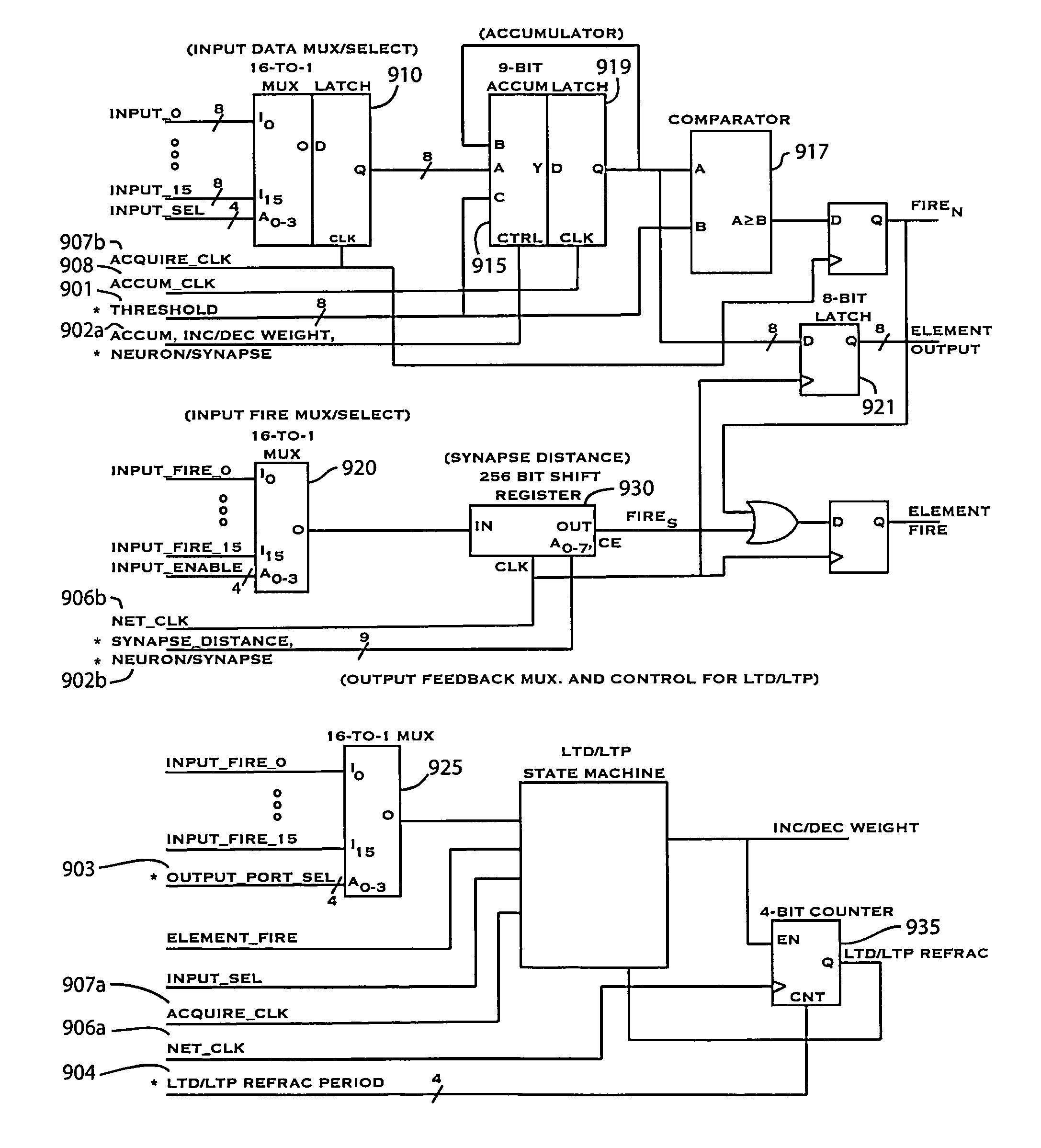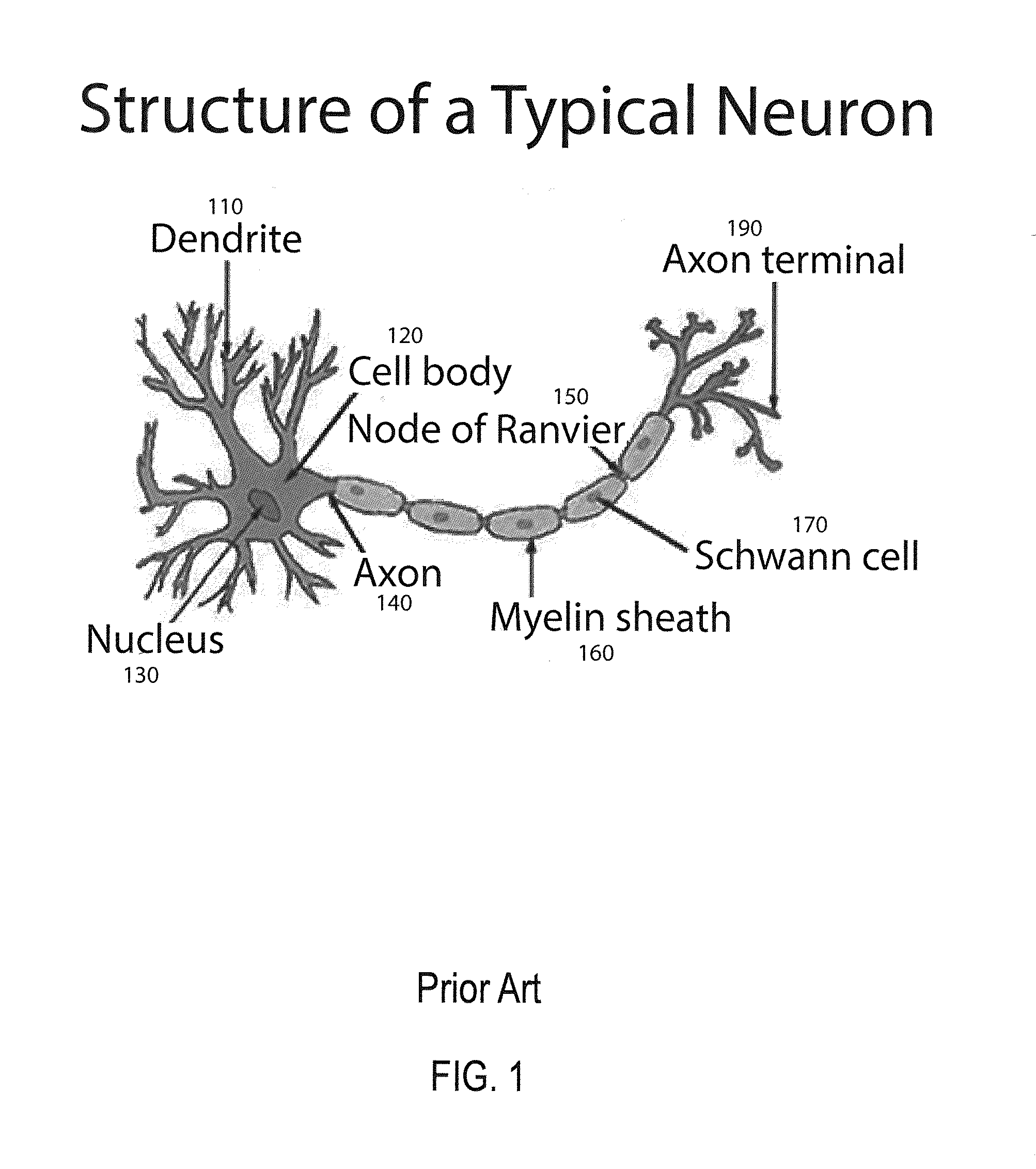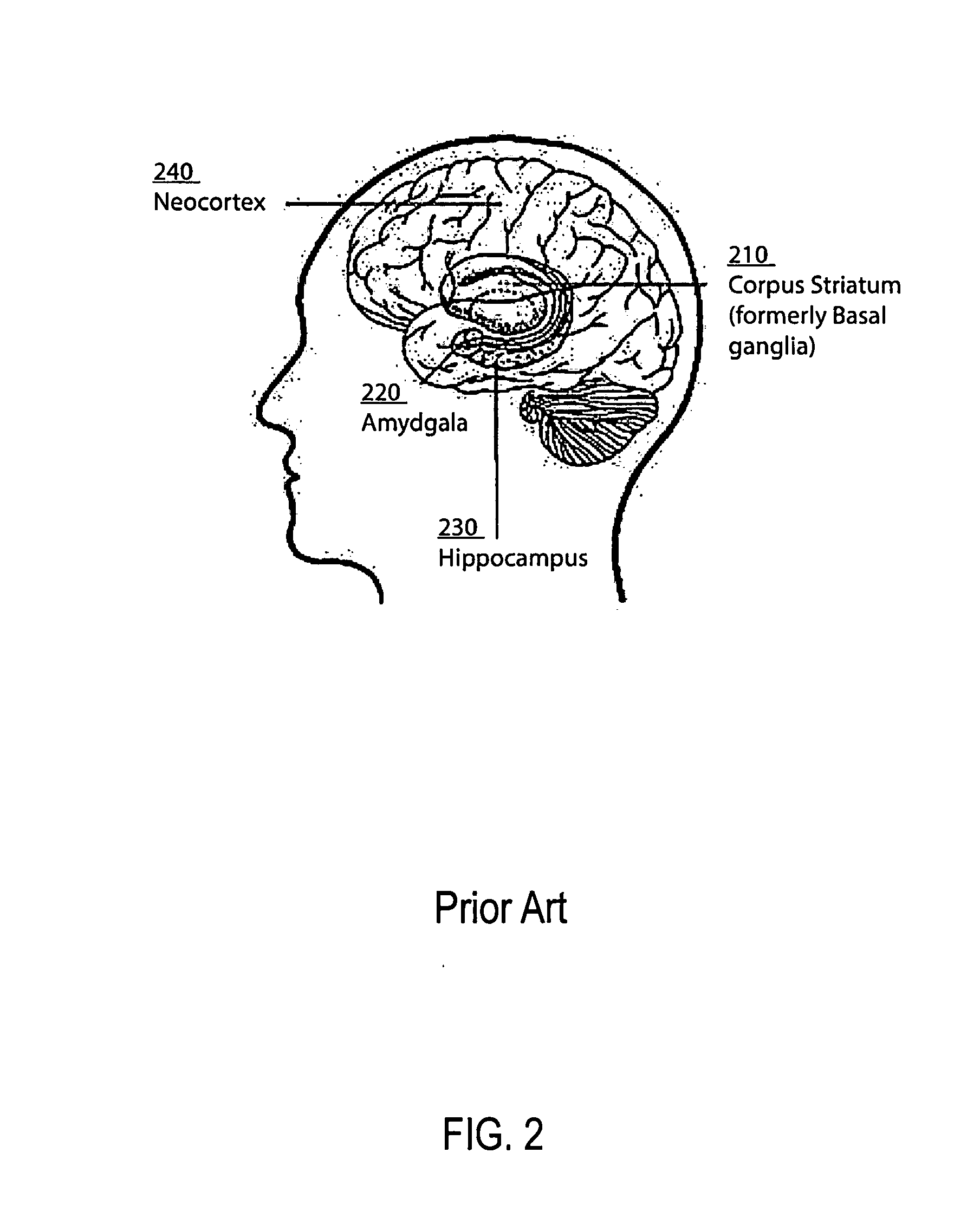Method and apparatus for providing random selection and long-term potentiation and depression in an artificial network
a technology of artificial networks and random selection, applied in the field of random selection and long-term potentiation and depression in artificial networks, can solve the problems of not having a stable solution, the neuron to fire, and the unclear how learning and memory work in the human brain
- Summary
- Abstract
- Description
- Claims
- Application Information
AI Technical Summary
Benefits of technology
Problems solved by technology
Method used
Image
Examples
Embodiment Construction
[0080]In accordance with an embodiment of a method and apparatus for providing random selection and and long-term potentiation and depression in a neuroscience-inspired artificial neural network in the form of a neuroscience-inspired dynamic architecture (NIDA) or a dynamic adaptive neural network array (DANNA) or combination of substructures thereof or with known artificial neural networks, networks of basic neuron and synapse elements may be constructed of field programmable gate arrays, application specific integrated circuits or other known integrated circuits that overcome the deficiencies of the prior art, the embodiment exhibiting five characteristics which differentiate over the prior art. Firstly, it is desirable that a neural network structure evolve over time. Evolution over time means that the learning algorithms of the prior art may not evolve in accordance with data (events) received at input neurons compared with the evolution achieved in accordance with the present i...
PUM
 Login to View More
Login to View More Abstract
Description
Claims
Application Information
 Login to View More
Login to View More - R&D
- Intellectual Property
- Life Sciences
- Materials
- Tech Scout
- Unparalleled Data Quality
- Higher Quality Content
- 60% Fewer Hallucinations
Browse by: Latest US Patents, China's latest patents, Technical Efficacy Thesaurus, Application Domain, Technology Topic, Popular Technical Reports.
© 2025 PatSnap. All rights reserved.Legal|Privacy policy|Modern Slavery Act Transparency Statement|Sitemap|About US| Contact US: help@patsnap.com



